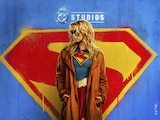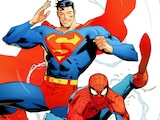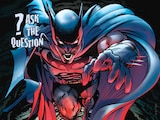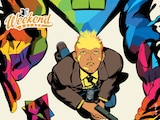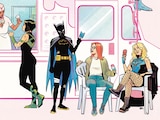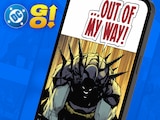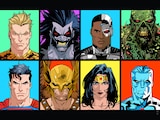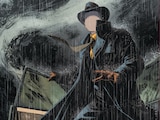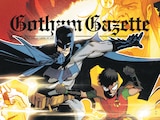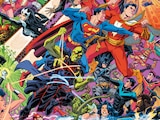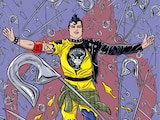For the past eight years, writer and artist Daniel Warren Johnson has built an enthusiastic fanbase entranced and thrilled by his alternative aesthetic, vivid imagination and quirky, unique characters in creator-owned comics like Space-Mullet, Extremity and Murder Falcon. Among them is none other than comic artist and DC Publisher Jim Lee, someone who knows a thing or two about bringing expansive, visionary worlds to life.
Recently, to mark the release of Johnson’s postapocalyptic DC Black Label book, Wonder Woman: Dead Earth, Lee sat down for a lively, insightful chat with Johnson, who discussed his history with comics, how he landed on telling a Wonder Woman story in his DC debut and why drawing the Batcave is a lot harder than it looks.
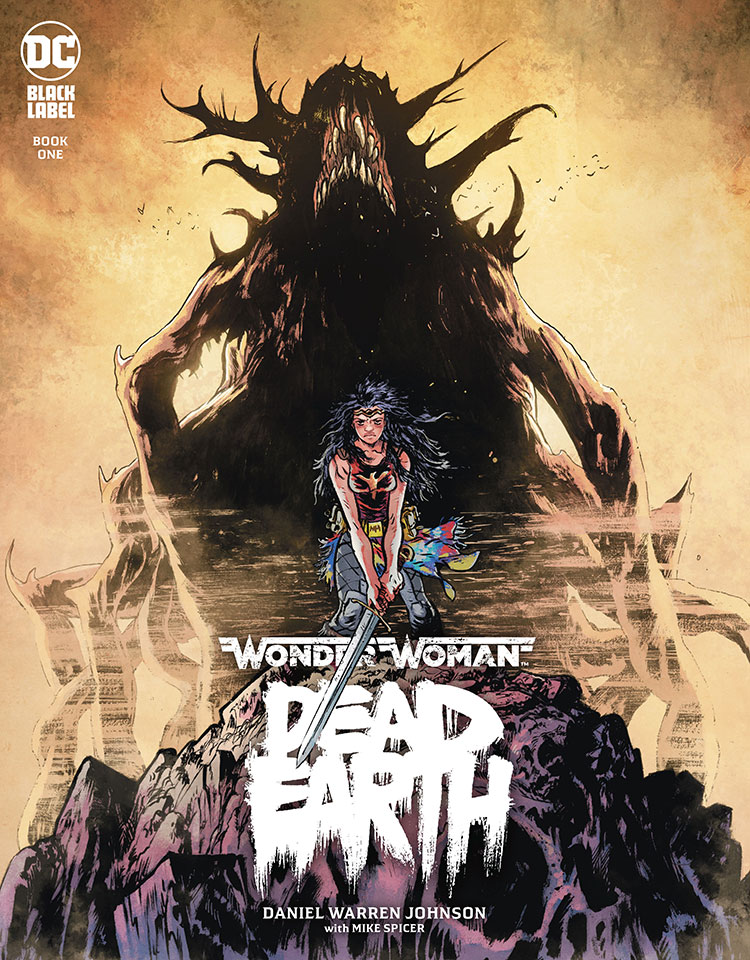
Jim Lee: We’ve never met, right?
Daniel Warren Johnson: I don’t think so. I’ve always wanted to meet you in person, but I’ve come to parties either too late or too early.
Lee: Next time! I’ve been a big fan, even before I knew your name. I think it was Gerard Way that first showed me your work—it was like a little mini-comic. Star Wars—it was about one of the pilots. I just thought it was a tremendous feat of storytelling. It stuck with me.
Later—maybe it was Gerard again—someone said your name, and I didn’t recognize it, but then they said, “Oh, he did that Star Wars comic,” and then it all started coming together for me. Having read this first issue, this is fantastic. It was an amazing read, and this is the kind of stuff I feel Black Label should do more of—out of the box, out of continuity, stuff that you would never be able to do in the regular book. It’s not even What If?—it’s bigger than that. I feel like it’s a combination of Dungeons and Dragons or Game of Thrones with superheroes, with obviously a lot of manga influences, as well. Very kinetic and moving.
I got a real heavy Jesus Christ vibe out of Wonder Woman in this story—when she’s talking to Dee about loving him and associating that with the first time she saw Steve Trevor, and how she defines love. To me, it’s pure, and it’s different from how we conceive of love—and that’s the way it should be, if you’re someone who was born on Themyscira with all of these Amazonians. We would share the same vocabulary, but the meanings would be different and deeper.

Johnson: I appreciate that. I guess I should say, “Bro, I’ve been reading you since I was like, friggin’ 13!”
Lee: Like what, five years ago? (Laughs) What was your starting point into comics?
Johnson: I was homeschooled from third grade to 12th grade. My parents are super-cool, but I was very protected from the world. My first foray into comics really was Calvin and Hobbes. I think part of what attracted me to it were the dynamics in the line work—Bill Watterson’s brush. It just got me really excited. I could tell that he had mastered his craft enough that he wasn’t wasting a lot of time drawing it, if that makes sense. It was just coming out of him.
That got me started on the journey, and then it was basically whatever I could get my hands on. This was like the last few years of being able to buy comics from the grocery store. My first Superman comic was the red and blue Superman. I remember my grandmother bought me one of the ‘90s Superboy comics, with the leather jacket. My dad said there was too much punching in it and took it away.
Lee: And here you are drawing Wonder Woman gutting a Haedra!
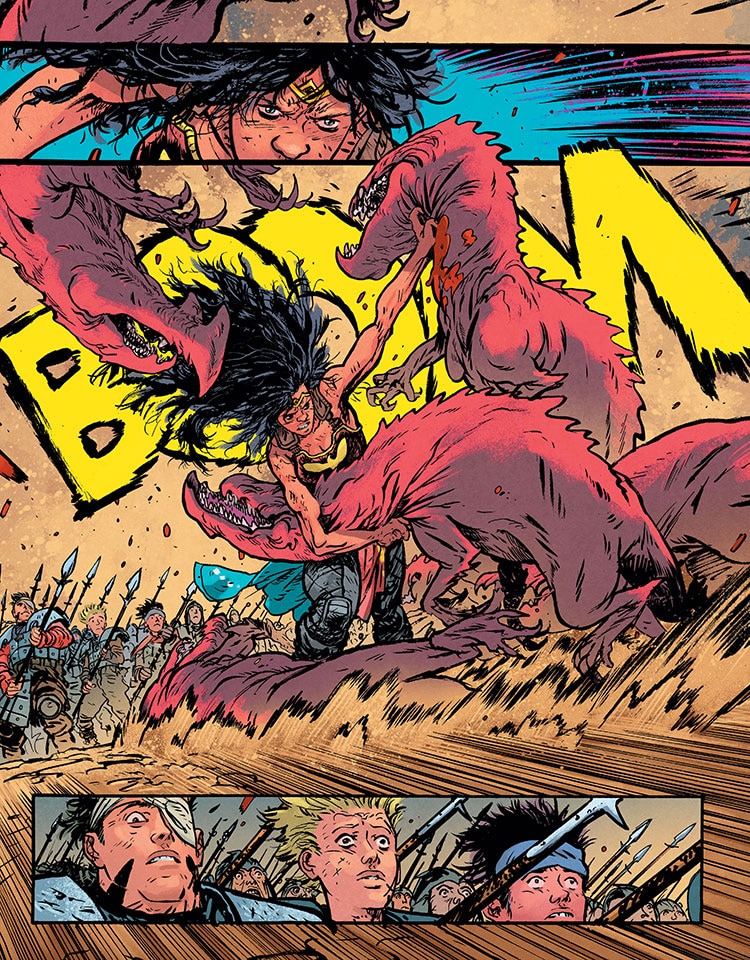
Johnson: Yep. I went the complete opposite direction.
As I became a teenager, I started getting more into manga. I started reading Appleseed and Akira, of course. In college, I started seeing more European art, as well. I always knew who Moebius was, but I never really appreciated it until I really started studying the artform of comics.
Of course, you were in there, too—WildC.A.T.S. stuff? Damn, dude.
Lee: So how many parts is this story going to be?
Johnson: Four issues. Forty-four pages each.
Lee: What inspired you to come up with this idea? Because first of all, I love the lyrical beginning. I love the fact that you say that the world is apocalyptic, but you do it in a very understated way. Which kind of ties the past into the future at the same time. Very clear, very effective.
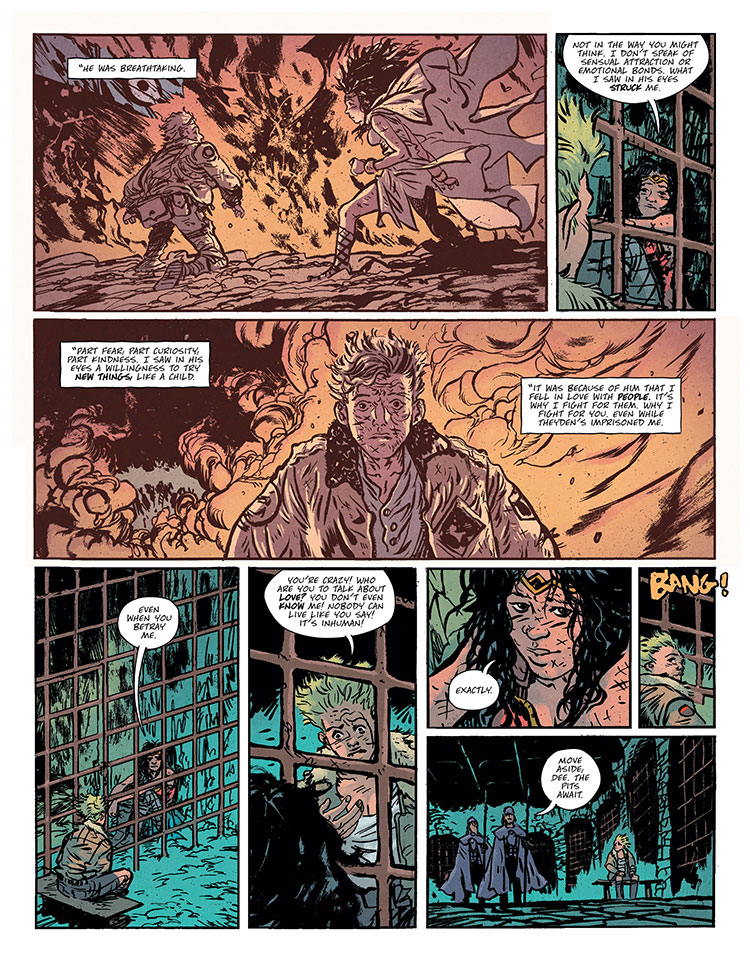
Johnson: Thank you. I didn’t really want to touch Batman or Superman when I was talking with Andy Khouri, because he was asking me to pitch DC stuff, and I was pitching maybe C or D-list characters. Andy was like, “Well, we’re kind of looking for the Daniel Warren Johnson take on more of an A-list character.”
Wonder Woman—I just felt like there was something there. Like you were saying with how Wonder Woman interacts with humanity and her perspective, I felt like that was pretty unique and interesting as far as superheroes are concerned. I wanted to make her look a little different, but still keep that core element of who she is. See if I could make something where I was really pushing her to her limits. I was trying to come up with a world to make Diana think, “Is what I believe truly worth it, when everybody else feels so differently?” That’s where the impetus of the story came from.
A lot of the conflict that I was drawing from was Diana and her mother, and her mother being that protective parent—overly protective. I’m a new dad myself, so I was channeling some of that energy. A lot of different stuff. I’m trying to draw from my own experience a bit. And fun things to look at—like the Cheetah with the cheetah hand.
Lee: The Cheetah was brilliant! When I saw Cheetah, I said, “Anything is possible in this world!” It really showed me, “I’m going to see stuff I’ve never seen before.” Which I think is a rare gift. You don’t see that a lot in comics—people pushing things to the limit.
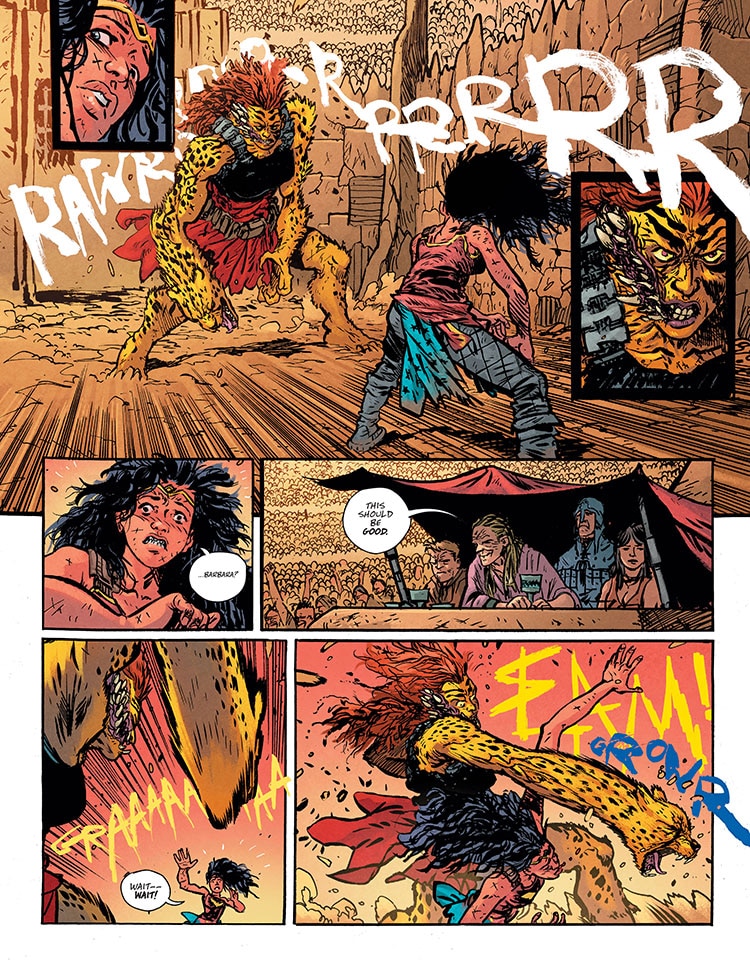
That whole scene where goes, “You don’t know what he did to me…” It was super-powerful. Again, Diana’s response to it, everything in character. Just tremendous. I’m very anxious to see what happens when she takes this lost colony—or tries to take them—to paradise. It’s that classic tale, but done in a completely different, novel way, using one of our marquee characters.
In some ways, it’s just as applicable to what’s happening in the world now. We need heroes, we need people to look up to, and we need love. We need understanding. When you talk about, “You don’t know what I have to do, I’ve got a thousand souls I have to feed and take care of”—parents can relate to that. People in organizations can relate to that; that type of responsibility and what it does to people. There are a lot of interesting things that are relevant to today’s time, because there are people in need. There are resources that are becoming more finite. There are things that endanger us all. Who’s going to step up and lead and make a difference? That’s what I got out of that first story.
Johnson: I appreciate that. I’m glad that comes through.
I’m not going to give anything away, obviously, but…it gets crazy. Issue #2 gets pretty crazy.
Lee: I figure there are more twists and turns. She could have easily just been found in a cave, but the fact that she was in a canister, wearing a weird suit…
Also, I love the understated reveal: The kids fall through the ground, they land on something, then you realize, “Oh, crap. They landed on a canister. Oh, crap. It’s Wonder Woman!” Then you pull back and go, “Oh, crap. They’re in the Batcave!” There are a million ways you could pull off that reveal, and I thought it was really cool and understated, and done in a way that was really fun and interesting. Love that whole sequence.
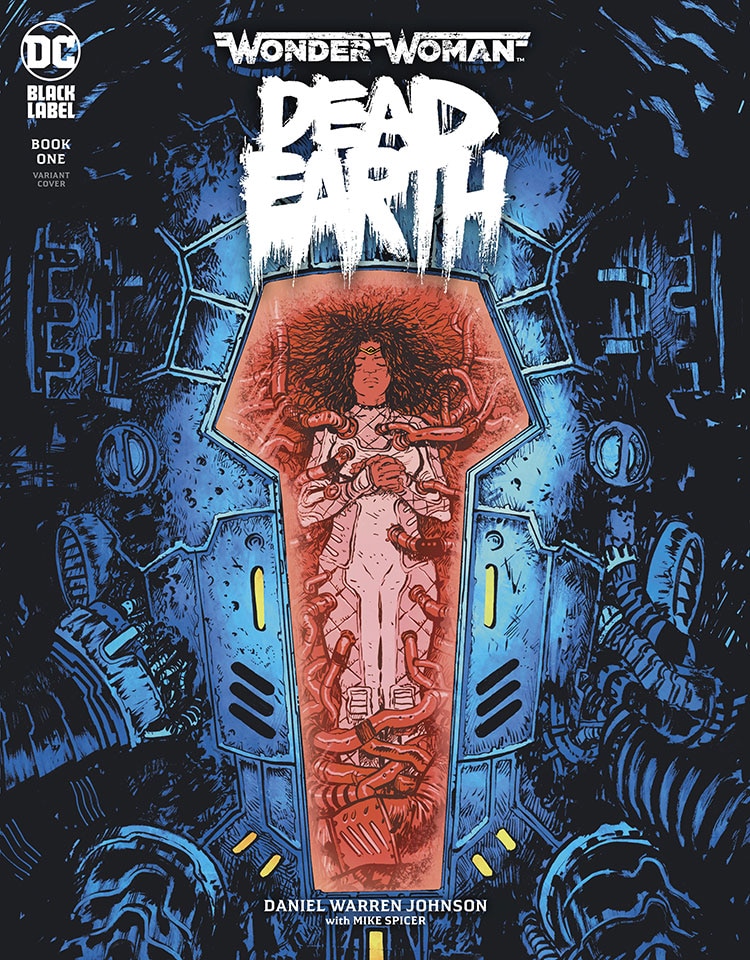
Johnson: Thank you. I purposely did not look at anybody else’s Batcave before I drew it.
It’s funny that you bring that splash up. I remember wanting a double-page spread to really sell it, but there just wasn’t enough room. I needed that space for other emotional beats and plot beats. I personally feel like the Batcave works really well in widescreen, and it’s more or less a square shape that I was dealing with. I remember at the coffee shop poring over the composition. Nothing was working. The only way to fit that stupid T-Rex in there was to have it be on the outside, basically the framing device. It was all just problem solving. (Laughs)
Lee: This is tremendous. Are you working on your next project for us? That’s what I want to know.
Johnson: The script for issue #3 is in. I’ll be working on that over the holidays. I’ll be finished drawing in May and then, who knows?
Lee: How did this format give you freedom you might not have otherwise had? Did you enjoy working in the wider aspect ratio?
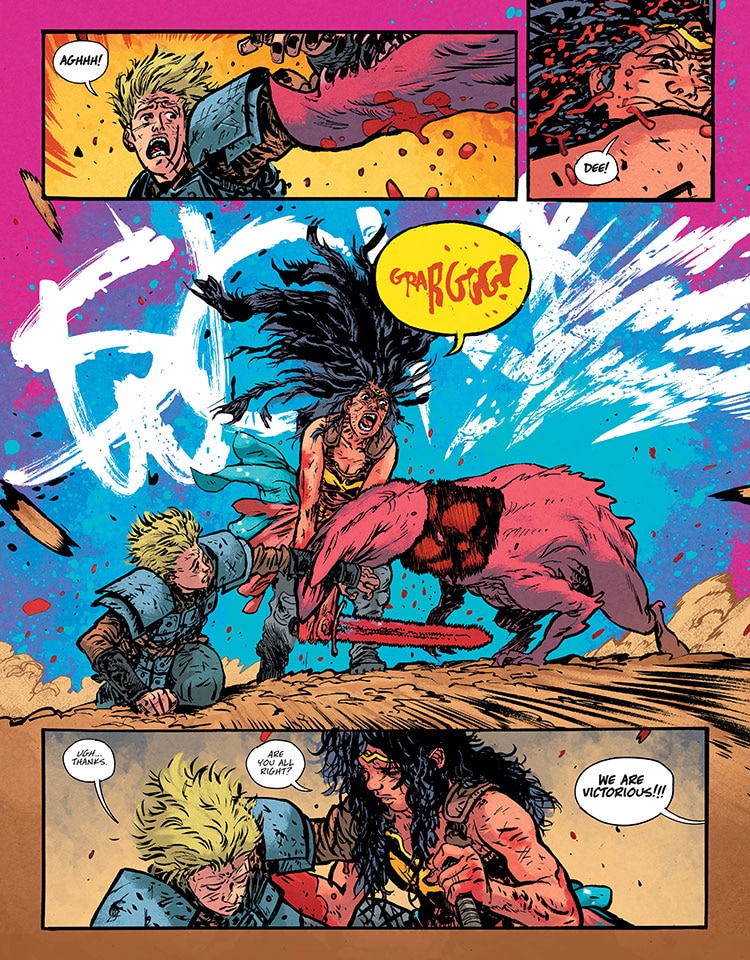
Johnson: That was definitely part of it. It was kind of relearning how to map out a comic book page. There’s more room and less room, all at the same time. I worked on 12” by 15,” something like that.
The different aspect ratio is definitely a big thing, but at the end of the day, that doesn’t have much sway over the actual creativity of a project. Black Label allowed me to do things like Cheetah having a cheetah for a hand. I feel like I pushed the way Wonder Woman looks a fair amount, to the point that if you were to swap my version of Wonder Woman with the DC stable Wonder Woman, people would be like, “Oh, who’s that?”
Black Label gives at least a little bit of an opportunity to draw established characters in a different way, that they might not even be recognized outside of that world, which is cool. You have this new sandbox that comes from established canon, and it has this context with it that people immediately recognize and expect, but within that context, you can really push the boundaries. It can really make for new and interesting ways to tell stories with characters that have been around for decades. Black Label does a great job of opening those doors.
Wonder Woman: Dead Earth #1 by Daniel Warren Johnson is now available in print and as a digital download.

